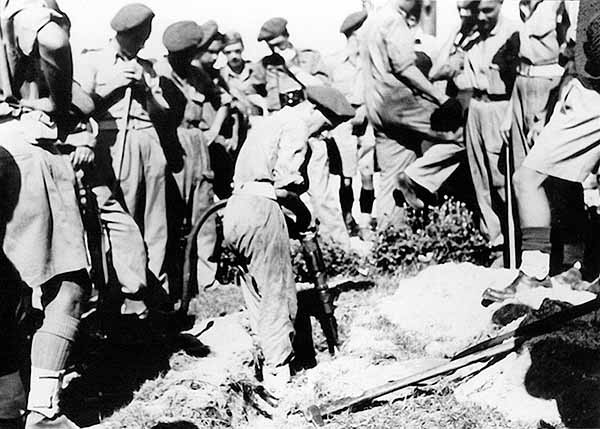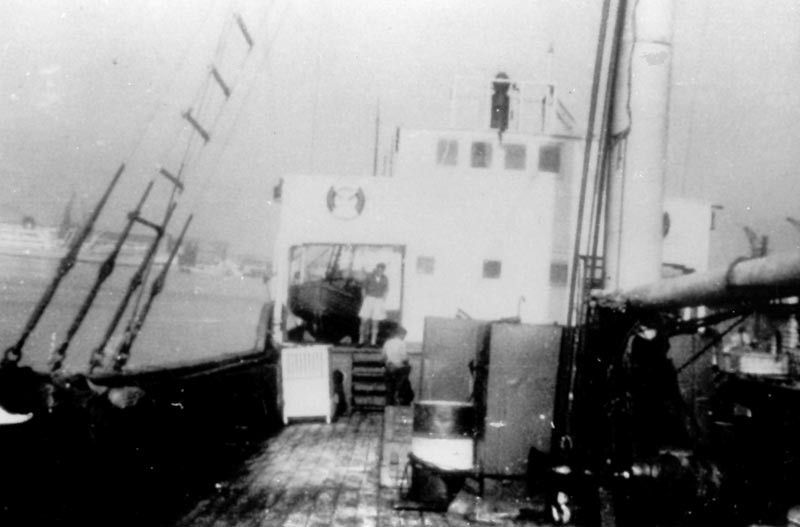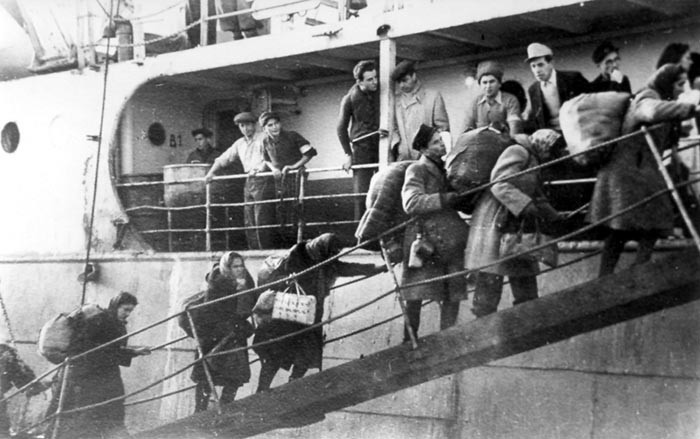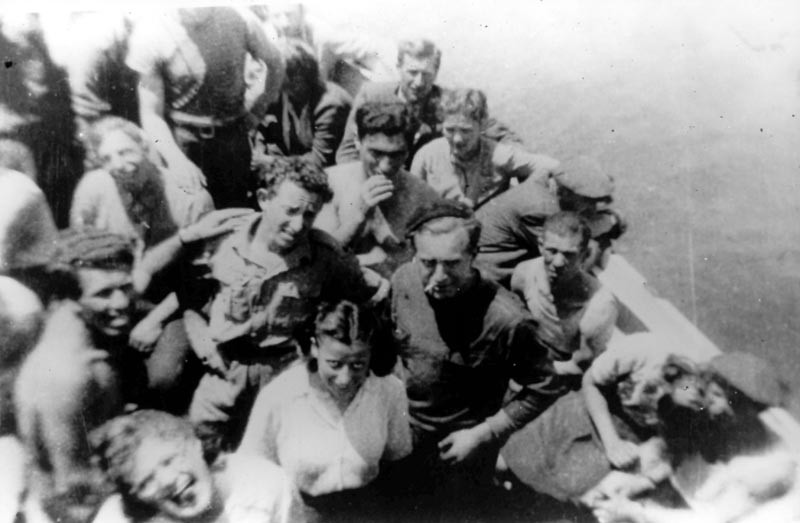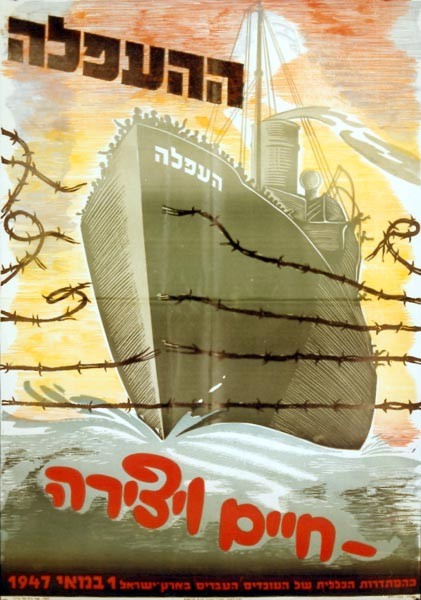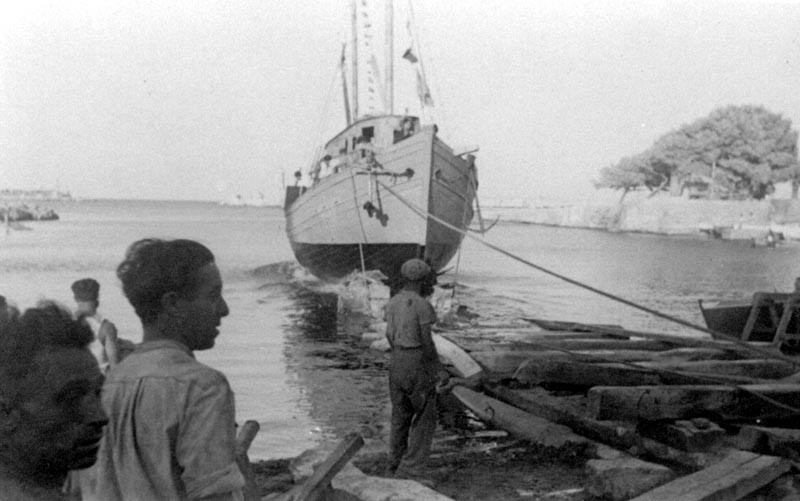Struggle against the British
In the fall of 1945, when the Second World War was over, the hopes for change in 'The White Paper' policy of the British Mandate government were not fulfilled. The leadership decided to change its relationship with the British Mandate rule: No more cooperation, not just diplomatic pressure – but a battle that would force the British government to change its policy. The battle was conducted on three levels: Increasing the number of immigration ships, reinforcing the purchase of lands and the establishment of new settlements and violent operations – with arms – against military targets and facilities.
In the fall of 1945, when the Second World War was over, the hopes for change in 'The White Paper' policy of the British Mandate government were not fulfilled. These policies placed harsh sanctions on the immigration of Jews into the country and purchasing lands for Jewish settlement, while the holocaust surviving European Jewry were held in transit camps and expected those rights. The leadership decided to change its relationship with the British Mandate rule: No more cooperation, not only diplomatic pressure – but a battle that would force the British government to change its policy and allow free immigration and maximum development for the 'Jewish national home.'
The battle was conducted on four levels: Increasing the number of Haapala ships aiming to enter the country's shores; reinforcing the purchase of lands and the establishment of new settlements; violent operations – with arms – against military targets and facilities, along with an increased political effort.
On the first three levels, the Hagana HQ activated the Palmach.
In fighting for Haapala – the Plamach's Naval Company - "Palyam" increased its operations as part of 'Hamossad for Aliyah Bet's attempt to increase the volume of Haapala (Illegal Immigration). The 'Palyam' members served as commanders, escorts and contacts for tens of thousands of immigrants, who made their way from Europe on 'Hamossad' ships, and a few hundreds who came by land in order to penetrate the British barrier over the country. The Palmach's naval sabotage detachment hit British facilities and navy vessels.
In fighting for lands and settlement – Palmach units escorted the settlement on lands that were purchased and cultivated by the Zionist institutions (KKL and the Jewish Agency) despite the prohibitions and sanctions. At times they even supported settlements and fought for their survival or reinforced them. Palmach units participated in the extensive settlement operation - 11 new settlements in the south and the northern Negev – on Yom Kippur Eve of 1946.
On the military front – the Palmach gave its operational support needed for the Haapala and settlement efforts and attacked various British targets such as: Police and radar facilities, coastguard boats and British destroyers, bombardment of bridges and railway tracks and more. The military operation lasted from 1945 until 1948. Between October 1945 and July 1946, the Jewish Resistance Movement coordinated the Hagana, Etzel and Lechi operations against the British, though the two latter ones opposed the institutional authority. The movement was dismantled in response to the Etzel bombing operation at the King David Hotel. After that, the leadership decided on moderating the military operation and reinforcing the Haapala and settlement efforts.
During the battle period, the Palmach gained combat experience, a legacy of battle and public prestige, which contributed to its strengthening up to the War of Independence and its function during the war.
The battle was conducted on four levels: Increasing the number of Haapala ships aiming to enter the country's shores; reinforcing the purchase of lands and the establishment of new settlements; violent operations – with arms – against military targets and facilities, along with an increased political effort.
On the first three levels, the Hagana HQ activated the Palmach.
In fighting for Haapala – the Plamach's Naval Company - "Palyam" increased its operations as part of 'Hamossad for Aliyah Bet's attempt to increase the volume of Haapala (Illegal Immigration). The 'Palyam' members served as commanders, escorts and contacts for tens of thousands of immigrants, who made their way from Europe on 'Hamossad' ships, and a few hundreds who came by land in order to penetrate the British barrier over the country. The Palmach's naval sabotage detachment hit British facilities and navy vessels.
In fighting for lands and settlement – Palmach units escorted the settlement on lands that were purchased and cultivated by the Zionist institutions (KKL and the Jewish Agency) despite the prohibitions and sanctions. At times they even supported settlements and fought for their survival or reinforced them. Palmach units participated in the extensive settlement operation - 11 new settlements in the south and the northern Negev – on Yom Kippur Eve of 1946.
On the military front – the Palmach gave its operational support needed for the Haapala and settlement efforts and attacked various British targets such as: Police and radar facilities, coastguard boats and British destroyers, bombardment of bridges and railway tracks and more. The military operation lasted from 1945 until 1948. Between October 1945 and July 1946, the Jewish Resistance Movement coordinated the Hagana, Etzel and Lechi operations against the British, though the two latter ones opposed the institutional authority. The movement was dismantled in response to the Etzel bombing operation at the King David Hotel. After that, the leadership decided on moderating the military operation and reinforcing the Haapala and settlement efforts.
During the battle period, the Palmach gained combat experience, a legacy of battle and public prestige, which contributed to its strengthening up to the War of Independence and its function during the war.






